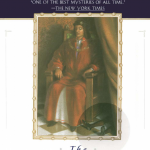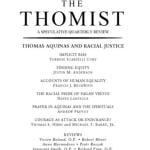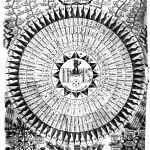This review was first posted in May of 2004.
 The Complete Peanuts 1950-1952 (Vol. 1) (The Complete Peanuts)
The Complete Peanuts 1950-1952 (Vol. 1) (The Complete Peanuts), by Charles M. Schulz, is the first of a series of books to be published over the next twelve years, containing the complete run of Peanuts cartoons from October of 1952 until Schulz’s retirement, a span of nearly fifty years. I bought it for two reasons.
The first is purely nostalgic. During most of my life, the only Peanuts cartoons I read in the newspaper were the Sunday strips. The daily strips weren’t on the usual comics page; instead, they were just inside the front page, which I seldom looked at. Thus, my knowledge of Charlie Brown et al came from a handful of Peanuts collections, most of which I inherited from my siblings, and all of which were from the first ten years of the strip’s existence. I read them over and over. And many of the ones I remember best are from the time period covered by this current collection.
The other reason is that I’m a comic strip junkie, and I especially like watching comic strips evolve. There’s always a period of time during which the cartoonist is figuring out how his characters are drawn, and what personalities they have, and I find it fascinating to watch. In this case, I also found it fascinating to re-read the same cartoons I’d loved as a kid, and see things that had gone completely over my head.
Here are a number of things I noticed as I was reading it.
As the strip begins, there are only four major characters: Shermy, Patty (who is not the Peppermint Patty of the later years), Charlie Brown, and Snoopy. Shermy and Patty are the big kids—they both go to school (though it might only be kindergarten). Charlie Brown is the little kid in the neighborhood; he doesn’t go to school yet. And the kind of problems Charlie Brown has with Patty and Shermy (though mostly with Patty) are the kind of problems any little kid has with the Big Kids. Interestingly, there’s a clear scent of on-again/off-again romance between Patty and Shermy. Snoopy, meanwhile, is just a dog. He has moods, and opinions, but they are non-verbal. His big thing is that he can always tell when Charlie Brown has anything to eat, especially ice cream or candy.
Over the course of the first year, Charlie Brown gets a little older, and a new cast member is added: Violet, a pretty girl of Charlie Brown’s own age, with two straight pigtails in back (though she’s usually drawn in profile, so you can only see one). One gathers that she was added to give Charlie Brown a love interest of his own. Violet, interestingly, is the first girl to hold a football for Charlie Brown; and though she takes it away at the last minute, it doesn’t appear to be due to malice. Charlie Brown also shows up playing Beethoven (badly) on a violin during this period.
The next kid to arrive is Schroeder, the new baby in the neighborhood, and for the first month or so a baby is all he is—and then the piano shows up, and he takes off with Beethoven. By the end of the book he’s walking and talking and playing baseball with Charlie Brown—who at this point is always shown as the catcher, never the pitcher—though he’s definitely still younger than Charlie Brown.
Shortly after Schroeder makes the transformation from toddler to little boy and Charlie Brown’s frequent companion, Lucy shows up. As with Schroeder, she starts out more or less as a toddler, and though she has an independent streak she’s initially relatively guileless. Toward the end of the book, she does indeed hold the football for Charlie Brown in a Sunday strip in which he twice fails to kick the ball, and in neither case does she pull the ball away. The first time she’s afraid that he’ll kick her, and so she lets go of the ball so that it flops over just as he’s about to kick it. The second time Charlie Brown warns her to hold it absolutely still, and she holds it so tightly that he can’t kick it out of her grip. In neither case is she being mean; she’s trying her best, in fact.
After Lucy appears, Violet’s hairstyle begins to change, possibly because she and Lucy look too much alike. Over the course of several months it goes back and forth between her signature pigtails hanging straight down in back and a single proto-bun on the back of her head.
It’s about this time, or maybe a few months earlier, that Snoopy shows signs of becoming a Dog of Parts. Charlie Brown comments that everyone in town is getting a TV, and gives as evidence Snoopy’s doghouse, which has a TV aerial on top. (If I’m not mistaken, this marks the first time Snoopy’s doghouse appears in the strip.) A month or so later, angry at being left all alone by the kids at the end of the day of a long day of play, Snoopy stalks off to his dog house. If they don’t want to play anymore, that fine. He doesn’t need them. He can spend the evening watching TV.
And then, just at the end of the book, Linus makes his first appearances as Lucy’s baby brother.
As 1952 comes to a close, none of the characters yet look quite as we will know them for the better part of the strip’s life. Charlie Brown’s head is still noticeably oval when seen full-face. Snoopy hasn’t yet begun to walk on his hindlegs or sleep on top of his dog house—it’s not even completely clear yet that he’s Charlie Brown’s dog. Violet is clearly evolving toward her final form, but hasn’t gotten there yet. Schroeder is already a big Beethoven fan, but Lucy has not yet fallen in love with him. Lucy, who is still noticeably younger than Charlie Brown, has not yet opened her psychiatrist’s booth. Linus has not yet acquired his security blanket, nor can he talk. Charlie Brown plays baseball, but has not yet begun to pitch.
There’s good stuff in this first volume, but clearly, the best is yet to come.












